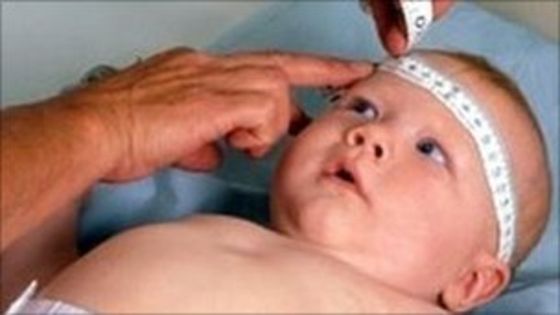Don’t get the big head.
My father used to say that to me. I assume that he meant no one likes a swell head, an arrogant, cocky person.
We all need humility—some more than others. But, as for the big head, it’s too late.
Human beings are born with big heads. Our brains are so big that our lobes are double folded into gyri and sulci—ridges and valleys—three pounds of mental mush crammed into a two pound pot.
Even with the biggest egos, humans do not have the biggest heads. The sperm whale brain is the heaviest at 18 pounds (.02% of body mass), elephant brains weigh around 12 pounds (.1% of body mass). The human brain weighs on average 3.1 pounds but represents 2.1% of the total human body mass. In intelligence, size counts, but not as much as the brain/body ratio, in which humans top the chart.
All of this stems from evolution’s tricks to make us smarter. As hominids evolved, the brain grew larger with primitive areas near the brain stem and higher thinking in the frontal cortex. New brain functions were lumped in, while the old stuff remained—like a never-cleaned attic.
So, we have a big brain.
Which creates a problem: how does the big brained baby get through the birth canal?
One evolutionary compromise may have been shorter gestation periods producing the baby sooner in a smaller, incomplete package for easier, though still painful and dangerous, delivery. Consequently, humans are born completely helpless, unable to move or feed independently.
Other large mammals have longer gestation periods (horses, 11 months; camels, 13-14 months; giraffes, rhinos and walruses 15-16 months) producing babies that are right-off-shelf, ready-to-go. Foals can stand and feed in the first 15 minutes of life. Baby elephants (20-21 months gestation) stand and feed on their own shortly after birth, though they remain physically and emotionally dependent on mom for 3 to 5 years ending their childhood around 10 years old.
Humans have the longest childhood of any species allowing the brain to grow and the child to learn. We now estimate that it takes 25 years for the human brain to mature.
Evolution appears to be full of compromises and oddities all of which occurred over millions of years. Consequently, evolutionary psychology is an excellent choice for study: one’s speculations, theories and hunches cannot be fully disproved. Like predicting the weather or political punditry—you can never be wrong.
In theory, every biological and psychological act facilitates survival. We adopt behaviors that confer an advantage, or, in other words, increase an individual’s chances of passing on their DNA.
We can readily imagine the long discussions of DNA sharing tactics around the prehistoric campfires, probably like locker room talk and what a female politician in Oklahoma referred to as beauty shop talk.
One view from evolutionary psychology is the Sexual Strategies Theory that men and women have different tools—gametes—to achieve zygote—procreation. Therefore, different tools mean different strategies for mating, leading men and women to natural conflict over the best way to extend lineage—this one known as the Sexual Interference Theory.
With this theory, men increase the likelihood of procreating by having multiple partners. Consequently, the theory goes, men are natural philanderers—big game hunters bringing home the mastodon and flinging gametes in all directions. Furthermore, the challenges of the hunt required men to develop language and collaboration.
Women, on the other hand, benefit from one partner who will care for her during pregnancy, labor and childbirth. In addition, women would spend their day, children in tow, foraging for nuts and berries—the granola of the Paleolithic era.
Human evolution is often illustrated with a bunch of hairy men in the snow wearing loincloths while the most desirable male mate chucks a spear into the beastly mastodon. (Mastodons were herbivores hunted to extinction 10,000 years ago.)
Back at the cave, the men are portrayed working on their spears, conducting R & D on the flint head. This demonstrates another key to human evolution: the acquisition of technology enabled by increasing intelligence.
Intelligence brings us back to the big head and helpless human infant.
Humans needed the big head to hold their growing intelligence. And, the helpless infant needed time to learn the accumulating knowledge. Human beings have the longest childhood of any species. Longer childhood correlates with greater intelligence.
Thanks to Grandma.
Our long childhood—and our increasing intelligence—were made possible by Grandma, in a theory promoted by Allison Gopnik. Consider this: humans are one of only three species where the female lives past her fertility. Even in the ice age, a woman could live up to twenty years past menopause.
Grandma’s longevity—an extra 20 years—allows her to care for the infants and assist mother and father in raising children, even to the point of nursing. In Thailand, grandmothers become the primary caregiver. In existent hunting and gathering societies, grandmothers help young mothers learn to feed their babies.
As for men, the gamete Gatling gun theory is not an effective strategy to pass on DNA. With multiple partners, the would-be father has no contact with the mother and, with high infant mortality rates, has little assurance that the child will reach adulthood. However, within a mother-father pair bond, the odds of survival dramatically increase. This pair-bond (what lay-people call love) creates a structure of care that expands to grandmothers, cousins, neighbors and so on.
Maybe human collaboration and language came from the hunt. But, isn’t it more likely that it emerged from the need to care for babies?
It’s anybody’s guess because none of us was there.
The love for a child is intense. One of the strongest feelings humans can experience. It occurs every generation in every culture.
Technology is great. But, no one loved the flint head spear, copper axe, or Xerox copier as much as they loved their child. And technology is the product of intelligence nestled in the big head.
We evolved and we all got the big head, thanks to grand mothering.





